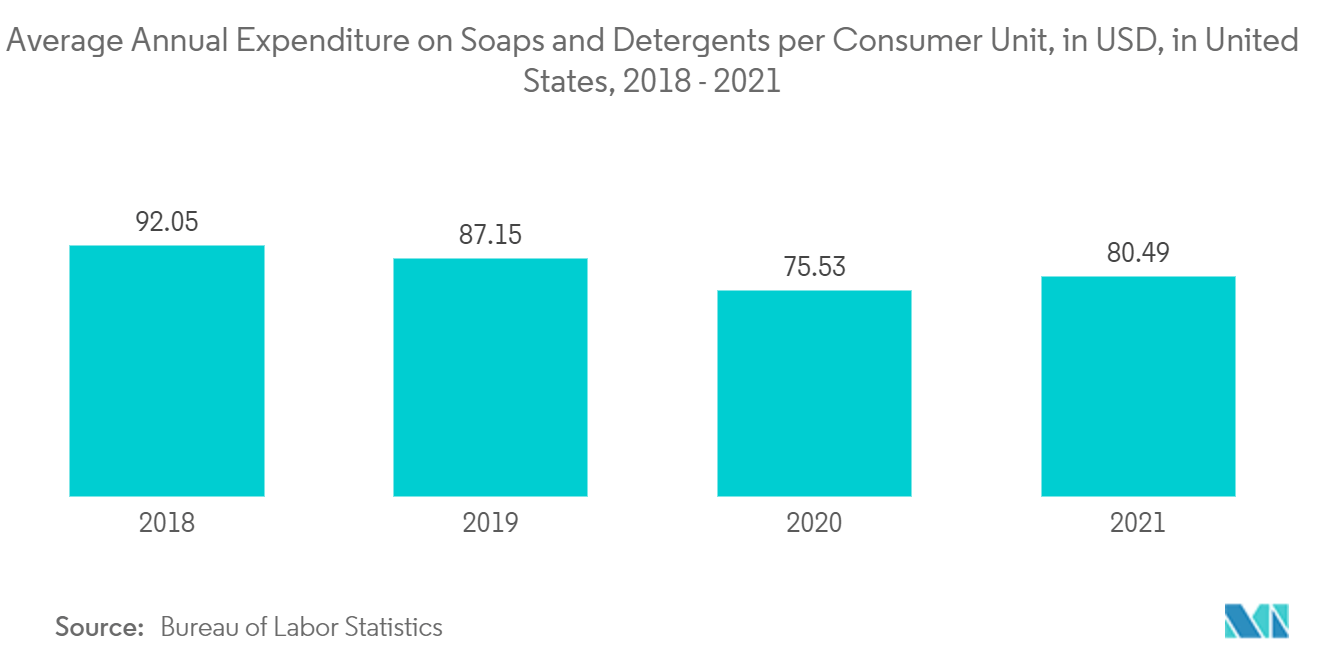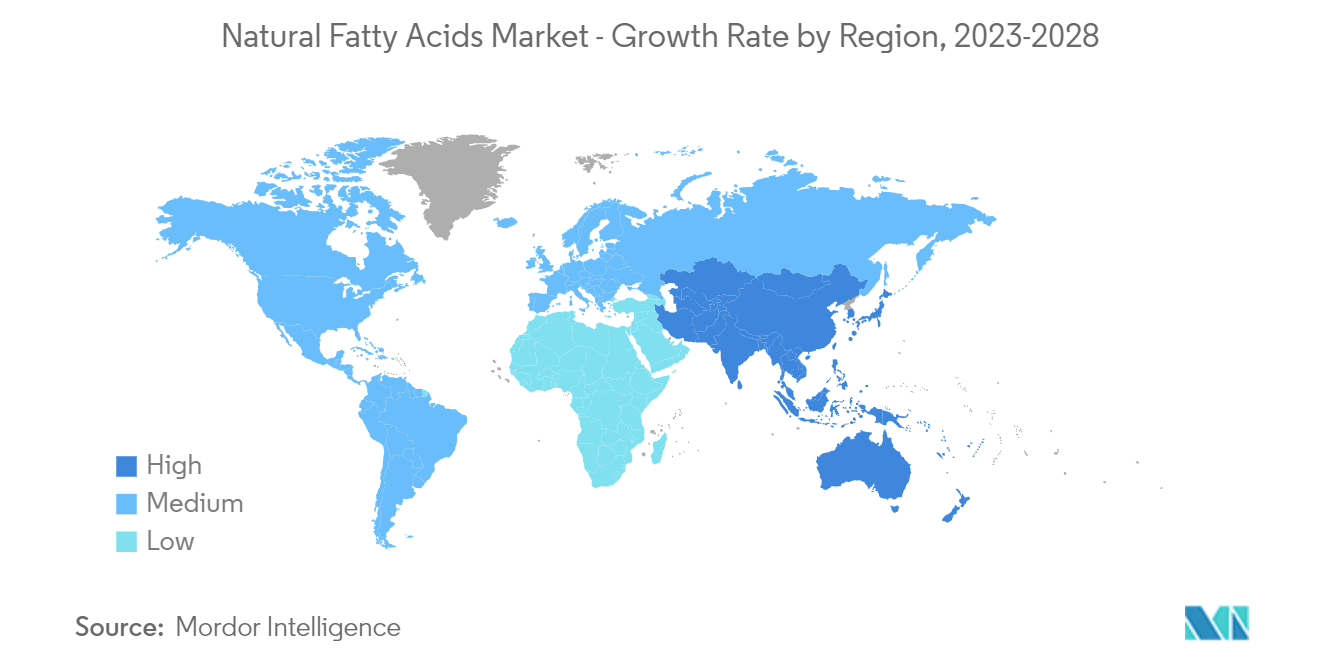Market Trends of Natural Fatty Acids Industry
This section covers the major market trends shaping the Natural Fatty Acids Market according to our research experts:
Household, Cosmetics, and Personal Care Segment to Dominate the Market Demand
The antibacterial, antifungal, and antiviral properties of natural fatty acids make them widely popular for use in the household, cosmetics, and personal care markets.
- Besides, fatty acid provides an opacifying effect and consistency and increases the thickness of the product. As a result of these properties, natural fatty acids are widely used in cosmetics and personal care products.
- The personal care and cosmetic industry accounted for around USD 317 billion in 2021, with Asia-Pacific and Europe leading the market, which is expected to be driven by high demand for such products in these markets. Also, by 2027, the personal care industry is expected to be worth about USD 354,80 billion.
- According to the Industry Association for Personal Care and Detergents e. V. (IKW), revenues from laundry detergents and cleaning products in Germany accounted for EUR 5,092 million (USD 6,024.60 million) in 2021, compared to EUR 5,246 million (USD 5,989.49 million) in the previous year.
- Furthermore, in the United States, the average annual expenditures for soaps and detergents amounted to roughly USD 80.5 per consumer unit in 2021, up from USD 75.5 in 2020. This growth is likely to make the soap and detergent business use more natural fatty acids.
- Rising incomes, increased urbanization, and increased awareness of the importance of hygiene have resulted in a robust increase in demand for household, cosmetic, and personal care products.
- Since more personal care and beauty products are being made, the use of natural fatty acids will also continue to grow over the next few years.

Asia-Pacific Region to Dominate the Market
- The Asia-Pacific region dominated the global market share. In the region, the demand for natural fatty acids is widely driven by their increasing application in industries such as cosmetics and personal care, detergents and soaps, oilfields, and lubricants.
- The region has been witnessing strong growth in the demand for personal care and cosmetic products, largely driven by the influence of western culture. This has led to the increased usage of cosmetic products by teenagers, increased awareness of being presentable with growing women's employment, and increased hygiene awareness, owing to which the production of such products has also been increasing in the region.
- Besides, Asia-Pacific is also the largest producer of products such as soaps, rubber, and plastics. The production of rubber and plastics has been increasing noticeably in the region with growing usage from industries such as construction, automotive, and electronics.
- In 2021, the total production of plastic products in China will amount to 80 million metric tons, an increase of 5.27 percent from the previous year. China is the world's largest plastics producer, accounting for nearly one-third of global plastics production.
- Furthermore, India is also one of the major producers and consumers of plastic products. The total plastic exports from India to France during 2021-22 were around USD 225 million. Government initiatives like "Digital India," "Make in India," and "Skill India" will also boost India's plastics industry.
- The construction industry in the region has been witnessing strong growth owing to the growing residential and commercial construction in countries such as India, China, Indonesia, Singapore, and Vietnam. Besides, automotive production in countries like India, Malaysia, Thailand, and Indonesia has also been increasing substantially.
- With this, people are likely to buy more plastic and rubber, which is likely to drive the market for natural fatty acids over the next few years.
Hence, all such trends in the region are projected to drive the growth of the natural fatty acid market in the coming years.


